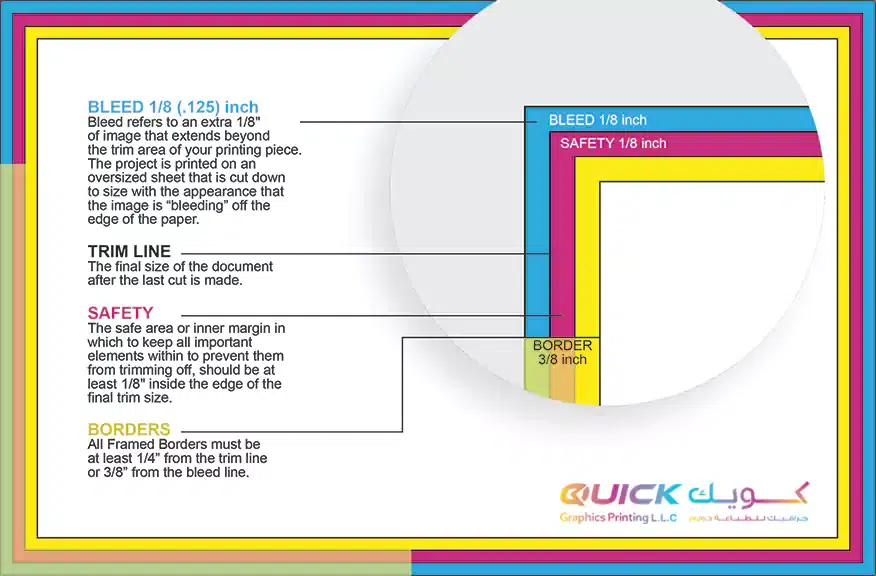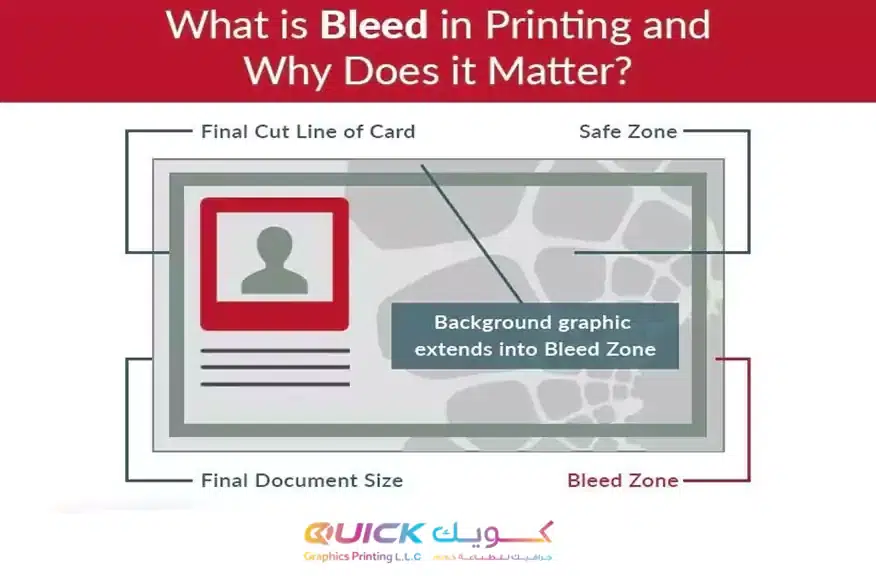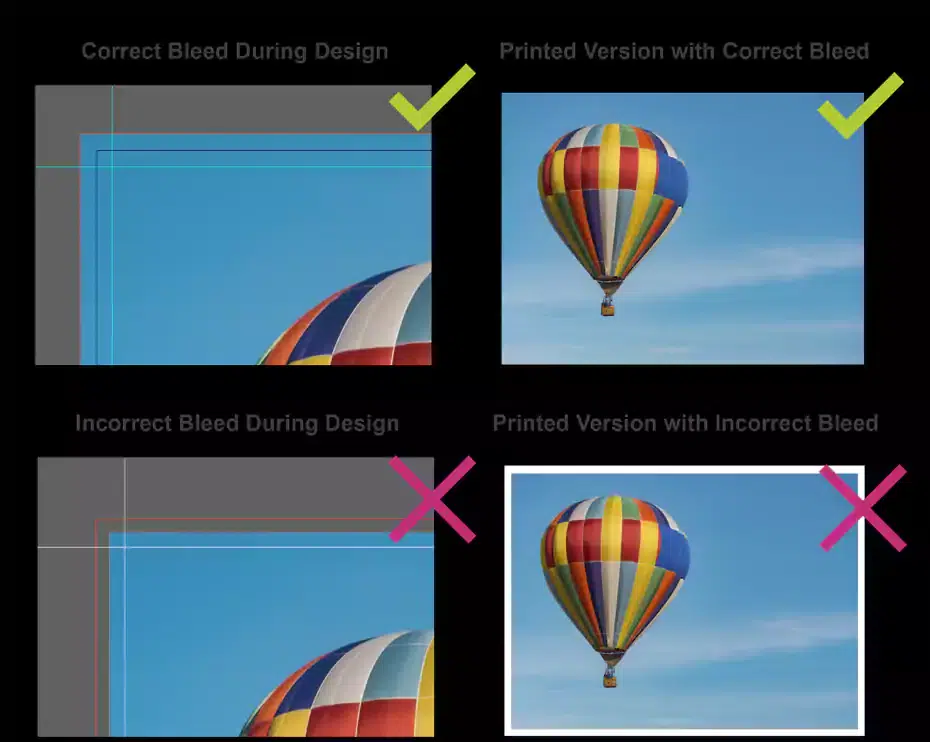
Unlocking the Secret of Bleed in Printing: Quick Printing's Expert Guide
Do you want to know about what is a Bleed in Printing? we are going to tell you in further details keep reading
What Does Bleed Mean in Printing?
Bleed refers to the area beyond the final trim size of a printed piece where the ink extends. It ensures no white borders along the edges of the finished product, even if slight inconsistencies occur during trimming. B bleed allows for a seamless edge-to-edge design.

What is a Bleed in Printing?
Understanding technical terms like “bleed” is crucial for achieving professional results in printing. Let’s delve into what bleed means and its significance in printing.

Should I Print with Bleed or Without?
Printing with bleed is recommended for designs where elements extend to the edge of the page. Without bleed, there’s a risk of white borders appearing due to slight shifts during trimming, compromising the overall aesthetics of the printed material.
What Does .125 Bleed Mean?
The term “.125 bleed” refers to an additional 0.125 inches (or approximately 3.175 millimetres) of space added to all sides of a document beyond the trim size. This extra space accommodates any potential shifts during trimming, ensuring that the design extends smoothly to the edge.
Why Do We Need to Bleed?
Bleed is essential for maintaining a professional appearance in printed materials. It compensates for mechanical limitations in printing equipment and ensures precision by allowing designs to extend accurately to the edge of the page.
How Much Bleed Is Good for Printing?
A standard bleed of 0.125 inches is commonly used in the printing industry. However, the specific bleed requirements may vary depending on the printing service provider. It’s crucial to follow their guidelines to ensure optimal results. If you want quick printing services, then visit our shop in Shabiya.
Why Print Files Need a Bleed Area?
Print files require a bleed area to account for any slight shifts that may occur during the trimming process. Without a bleed area, there’s a risk of white borders appearing along the edges of the printed material, detracting from its professional appearance.
Can All Printers Do Full Bleed?
Not all printers are capable of producing full-bleed prints. It depends on the capabilities of the printer and its ability to handle bleed requirements. It’s essential to check with your printing service provider to determine if full bleed printing is available.
Can Printers Print Full Bleed?
Printers equipped for full bleed printing can produce designs that extend seamlessly to the edge of the page. This capability allows for more flexibility in design and ensures a polished finish for printed materials.
What happens if you don't add Bleeding to a print document?
Failure to add bleed to a print document may result in white borders or unfinished edges along the trimmed edges of the printed material. This can diminish the overall quality and professionalism of the final product.
For further insights into full bleed printing, check out this informative article.
Conclusion
Understanding and implementing bleed correctly in your designs are essential for achieving high-quality printed materials. Trust Quick Printing for reliable printing services prioritizing precision and quality. if you are looking printing services in abu dhabi about your all urgent works. so must approch us.
